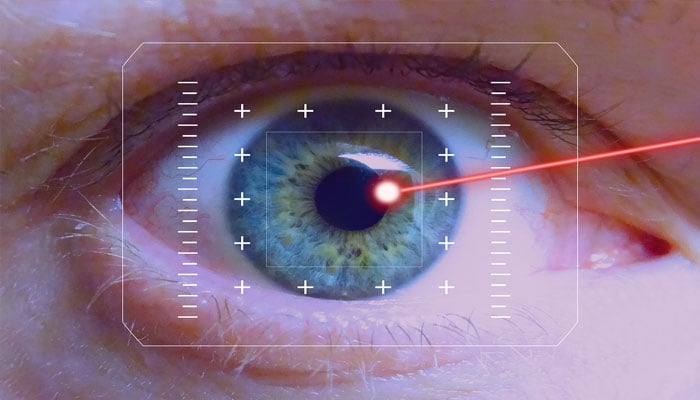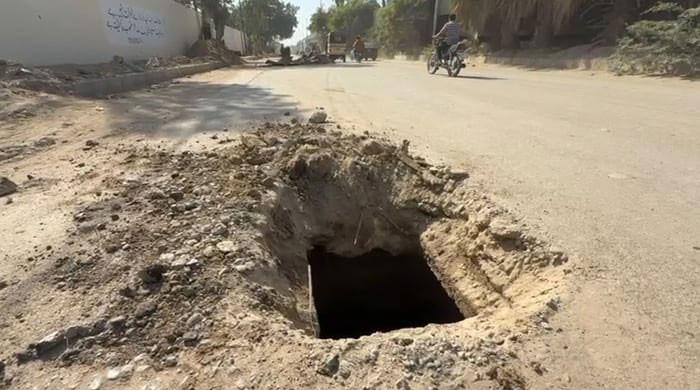How to fund humanity
Electronic eye implant creates a ray of hope for millions of people who have lost vision due to geographic atrophy
October 25, 2025

A pioneering electronic eye implant has created a ray of hope for millions of people who lose their vision because of a condition known as geographic atrophy (GA), which is an advanced stage of age-related macular degeneration (AMD).
Patients suffering from this common but untreatable age-related condition can now read again, which could greatly transform the lives of those whose loss of vision plunged them into a world of despair and depression.
According to the British media, the world-first trial involved 38 patients across 17 sites in five countries, including the UK, France, Italy, and the Netherlands. The patients involved in the study had lost the central sight in the eye being tested and had only limited peripheral vision remaining.
In order to restore vision, the tiny Prima device, measuring just 2mm by 2mm and having half the thickness of a human hair, is fitted under the layer of light-sensitive tissue in the eye called the retina, which allows patients to see letters, numbers, and words through an eye that was previously blind.
Experts claim that the 'prosthetic vision' breakthrough has never been achieved before, and represents a 'paradigm shift' in artificial vision. The device has been developed by US-based medtech company Science Corporation, reportedly working to restore quality of life to those with debilitating conditions for which there are no treatment options, creating devices aimed at restoring vision, cognition, and mobility to patients who have lost them.
It is not clear how much the company has spent on the project, but last year it announced plans to spend $65 million in the UK and add more than 50 jobs to its operations in Durham. It means that its investment in this particular project does not run into billions of dollars, rather it might be under one billion dollars or even much less than it.
So, with less than one billion-dollar investment, it managed to rekindle the hopes in the lives of those who had resigned to their fate. So far, it has benefitted a limited number of people but it is expected that the technology could be available one day on the National Health Services of the UK.
This little investment and tremendous efforts on the part of scientists and medical professionals indicate that we can address myriads of problems being faced by hundreds of millions or possibly billions of people by turning the direction of research towards human welfare, using science for the benefit of mankind.
But no research can be successful without sufficient resources and funding. We need to see where such funding is going. We must ask: are we really pumping public money and resources into the problems that really matter in our day-to-day lives? Is enough attention being paid to the positive use of science, or are we squandering trillions of dollars by pumping money into arms, missiles, tanks, bombs, fighter jets, submarines, and nuclear weapons?
It is very disheartening to see that states are unable to support their universities, colleges, and schools. They are reluctant to fund social science projects, asserting that they do not have any market value. They are least bothered about history, archaeology, arts, and poetry. For them, the market is the centre of attention. They do not want to do anything that is not financially viable for large corporations and big companies.
Perhaps this is the factor prompting our politicians and policymakers to work for the greedy transnational corporations whose voracious hunger for profit knows no boundary and whose gargantuan appetite for money-making wants to violate all moral and ethical principles. It seems everywhere researchers have been subordinated to these oligopolies, which do not want to address the root causes of any problem but would rather have problems to persist.
Imagine if the over $24 trillion that the US has spent on arms, defence, and nuclear weapons had been spent on ordinary Americans, on their education, health, and housing, would they still have been facing homelessness, skyrocketing student debts, and unbearable medical bills?
Imagine if countries like India and Pakistan had not spent billions or possibly trillions of dollars that they spent on fighting each other, would we still have over 90 million poor in Pakistan and over 500 million in India? Would the lives of our people still have been as miserable as they are today? Would homelessness and diseases still have been haunting our people? Would decent housing, free education, and primary healthcare still be a dream?
Imagine if Europe had not spent the trillions of dollars that it has been spending to counter Russia: would it still have been seeing the ominous shadows of the far-right rise? Would its people fear the return of 18th and 19th centuries' poverty? Would its social infrastructure still be crumbling?
What is done cannot be undone. But scientists, researchers, and states can still make a difference. The US and Europe need to rise with the spirit of the enlightenment and spend money on scientific research that has the genuine curiosity to know the world and solve its problems. They must extricate themselves from the obnoxious clutches of profit-making companies.
If they do not take the initiative, then China must step in, directing its resources towards scientific research that comes up with a treatment for incurable diseases. Malaria, TB, and many other diseases of the past are resurfacing, affecting millions of people in Africa and other parts of the world. Millions or possibly billions of people still lack basic amenities of life like pure drinking water, adequate housing, and proper sanitation. China could collaborate with the UNDP to address these issues of over 120 states.
If China also fails to take the initiative, then perhaps celebrities, musicians, actors, scientists, and the medical community should explore ways that can enable them to work with countries like Cuba that came up with their own coronavirus vaccine despite insurmountable hardships, extending it freely to poor states. The tiny communist state is also the one that sends tens of thousands of doctors and medical staff to any region of the world hit by natural calamities.
The last option might be crowdfunding and help from philanthropists. It is important that research is free from the political influence of the West. Therefore, scientists might pool their resources, coming up with ideas that address especially diseases that are plaguing the lives of millions across the world and directly appealing to the people to fund such projects.
It is claimed by some that many diseases, like diabetic, can be wiped out, but before any research companies spend years to ensure their own profit. If scientists could assure people that no profit motive is involved and that the treatment would be available to the vast majority of humanity rather than a tiny section of the rich, then people might open up their hearts. If seven people contribute one dollar each, it could be a staggering amount for any medical research project.
The writer is a freelance journalist who can be reached at: [email protected]
Disclaimer: The viewpoints expressed in this piece are the writer's own and don't necessarily reflect Geo.tv's editorial policy
Originally published in The News









